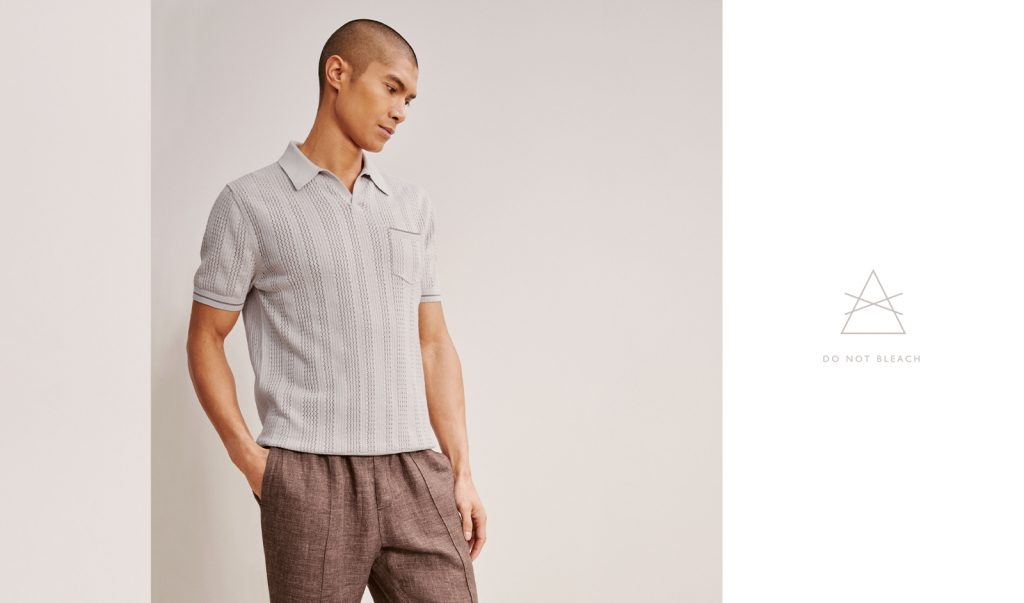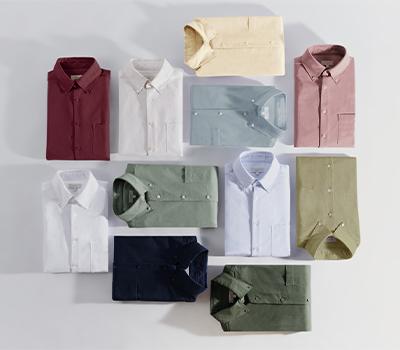
HOW TO TAKE CARE OF YOUR CLOTHES
Buying new clothes can be very exciting, especially when they make you look good and feel great. However, this moment of excitement can wash away if you don’t take care of your clothes properly. We’ve compiled all the tips and tricks up our sleeves to help you take better care of your clothes and prolong the wear of your favourite items.
Understanding care label symbols
When you are going to wash a new piece of clothing, double check the clothing care symbols, usually found on the labels inside. These symbols will tell you how to best take care of your clothing. But, what do the symbols on those care labels mean?
The international care labelling code is based on five basic symbols:
· Washtub – Washing
· Triangle – Bleaching
· Iron – Ironing
· Circle – Dry cleaning
· Square – Drying
If the symbols look like they have been modified, generally they are giving you extra information, and we advise you not to ignore that. Instructions can also vary depending on the material, fabric textures and colours.
Typically, if you see any of the above symbols with a cross, this usually means you shouldn’t use that method of washing or drying. Once you understand what each clothing care symbol means, this can help maintain the longevity and quality of your clothes.
How to wash your clothes
Some items of clothing need a little more loving care than others based on the material they’re made from. Fabrics like wool, cotton, linen, and merino need to be cared for differently. That’s because they’re more likely to shrink and lose their softness if they’re not cared for properly.
How to keep clothes looking great
Wash at lower temperatures
For many of us, laundry day can be dreaded as the pile of clothes grows, resulting in a bulk wash at 40 degrees. If you can, try to consider whether your washing needs a hot wash or a cold wash to protect the durability of your clothes.
If you want to be more proactive in protecting your clothes, and the environment, we recommend you wash your clothes between 20 to 30 degrees Celsius. Lower temperatures are energy efficient and can help preserve colourfully dyed fabrics.
For tougher stains, 40 degrees is better for your clothes and more energy efficient than 60. It’s also a universal temperature for most materials such as cotton, linen, viscose, and acrylic and the perfect temperature to wash jeans as it can prevent fading and shrinking.
The time to turn up the heat is if you need to fight off bacteria, and a 60 degree wash will kill off most germs. But remember, it can ruin your garments, so always check the label.
How to keep white clothes glowing
Have you ever noticed that the white shirt you wear to work is no longer really white? It could be that you’ve been using too little detergent. Our laundry tip to keep your whites glowing is wash your clothes with the right amount of detergent in the hottest water setting appropriate for the fabric.
If this doesn’t work, a classic homemade hack is adding half a cup of distilled white vinegar to your washing machine’s drum, followed by your load, and then wash as normal. Don’t worry about the strong vinegar-y smell. It will rinse out during the washing cycle.
?Press pause on dry cleaning
Going to the dry cleaners can be a costly process if you are visiting regularly, so you could consider a few home dry-cleaning solutions. Instead of taking your clothes to the dry cleaners to only remove a few crinkles, you could invest in a steamer or check your washing machine for a steam or refresh setting.
Other options include wearing dry-clean-only clothes less or adding an extra layer like a vest to keep the fabric away from your skin and minimise transferring sweat or smells. You can also keep your clothes feeling fresh and clean after wearing them by hanging them up on the line outside or by a window to ventilate the fibres.
Choose the right clothing storage
Another way to take care of your clothes is considering how you store them. Investing in a range of compartments, boxes and organisers can help you sort out your wardrobe from suits to socks.
It’s also a great way to maximise wardrobe space and make outfit hunting a stress-free process. Upgrade your wardrobe organisation skills, whilst protecting your clothing items by adding:
Drawer dividers for your socks and ties
Clothing storage bags for your shirts and trousers?
Garment bags for all your suits, coats, and jackets
Clothing storage solutions are a great way to prevent your wardrobe from becoming overcrowded. Then, rotate your clothing every season and place the previous season into storage boxes to optimise air ventilation and protect everything from smells. Poor ventilation in your wardrobes or clothing storage can produce moist air and cause damp damage to your clothes.
Washing Aftercare
When taking your clothes out of the wash, you’d usually expect them to be clean and smell fresh, but what if they come out with a bit smelly and yellow?
What to do after washing your clothes
Going back to checking your clothing care symbols, you can also find out how to dry your clothing properly on the label.
You can dry your clothes either by airing them or putting them in a tumble dryer. If you use a dryer, we recommend you dry your clothes as soon as you take them out of the washing machine to prevent your clothes from sitting damp for too long which can result in bad smells.
Bad smells can also be avoided by giving your washing machine a maintenance wash to prevent any build-up of mould and the appearance of any black spots which can sometimes be very difficult to remove.
Repair, alter, reuse
With sustainable fashion becoming more prominent in the market, it’s taught us the importance of reusing and repairing our clothes rather than going out to purchase a new shirt or pair of trousers because of a bit of loose stitching.
Consider repairing, altering, or incorporating your older clothes into a new outfit. This can also increase the life of your clothes without harming the environment. It’s good for your pockets, too.







